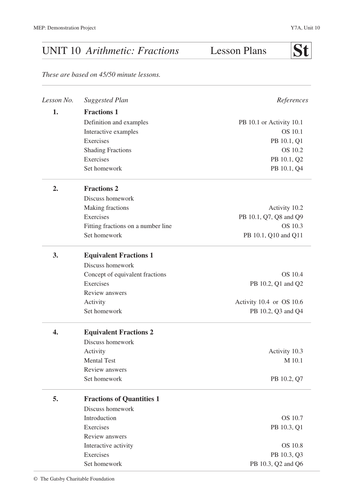Game Management Unit 7
Species within this unit:
Enjoy the videos and music you love, upload original content, and share it all with friends, family, and the world on YouTube. If you would like to discuss your project requirements, then please call us today on 020 8340 6028 or email dimitris@unit7.co.uk.We look forward to speaking with you. UNIT 7 Interiors Ltd.
Antelope, Black Bear, Elk, Merriam’s Turkey, Mule Deer
Hunters are encouraged to check with any of the following agency offices to get the latest information and current conditions as their hunt approaches.
- Kaibab National Forest Supervisor’s Office: 928-635-8200
- Coconino National Forest Supervisor’s Office: 928-527-3600
- Arizona Game and Fish Department: 928-774-5045
Note: Coconino and South Kaibab National Forest maps cover the majority of Unit 7. AZ State and private land comprise the rest of the unit.
The majority of Unit 7 is open to hunting but there are parcels of private property that are posted “No Trespassing” and/or “No Hunting”. There are many remote subdivisions throughout the unit and it is the hunter’s responsibility to know where they are at all times. Be sure of your background when shooting – houses can be obscured by vegetation and topography. Remember, it is unlawful to shoot within 1/4 mile of occupied structures when hunting.
Also, some private ranches are signed as “closed to off-road travel”. Be sure to respect the wishes of landowners. Such respect is critical in keeping private land open to hunting.
New USFS Travel Management Rule: The Coconino and Kaibab National Forests have implemented new travel management rules resulting in changes to motor vehicle access on national forest lands. These changes include motorized big game retrieval, road closures and camping restrictions. The Travel Management Rules only allow motorized use on designated roads, trails and areas as identified on a Motor Vehicle Use Map (MVUM). These free maps are available at Forest Service offices.

Because of these forest rule changes, only motorized retrieval of elk is permitted in Game Management Unit 7. Motorized retrieval of other wildlife, including all other big game species, is notpermitted on national forest lands in Game Management Unit 7. For further information regarding the Travel Management Rules, please contact the Coconino National Forest and Kaibab National Forests.
Unit Boundaries
Beginning at the junction of AZ Hwy 64 and I-40 (in Williams); easterly on I-40 to FR 171 (mp 187.4 on I-40); northerly on FR 171 to the Transwestern Gas Pipeline; easterly along the Transwestern Gas Pipeline to FR 420 (Schultz Pass Road); northeasterly on FR 420 to U.S. Hwy 89; across on U.S. Hwy 89 to FR 545; east on FR 545 to the Sunset Crater National Monument; easterly along the southern boundary of the Sunset Crater National Monument to FR 545; east on FR 545 to the 345 KV transmission lines 1&2; southeasterly along the power lines to I-40 (mp 212 on I-40); east on I-40 to the southwest corner of the Navajo Indian Reservation boundary; northerly and westerly along the reservation boundary to the Four Corners Gas Line; southwesterly along the Four Corners Gas Line to U.S. Hwy 180; west on U.S. Hwy 180 to AZ Hwy 64; south on AZ Hwy 64 to I-40.
Unit 7 West: Beginning at the junction of AZ Hwy 64 and I-40 (in Williams); easterly on I-40 to FR 171 (mp 187.4 on I-40); northerly on FR 171 to the Transwestern Gas Pipeline; easterly along the Transwestern Gas Pipeline to U.S. Highway 180; U.S. Highway 180 northwesterly to AZ Highway 64 (in Valle); AZ Highway 64 south to I-40 (in Williams).
Unit 7 East: Beginning at the junction of U.S. Highway 89 and FR 545; east on FR 545 to the Sunset Crater National Monument; easterly along the southern boundary of the Sunset Crater National Monument to FR 545; east on FR 545 to the 345 KV transmission lines 1&2; southeasterly along the power lines to I-40 (mp 212 on I-40); east on I-40 to the southwest corner of the Navajo Indian Reservation boundary; northerly and westerly along the reservation boundary to the Four Corners Gas Line; southwesterly along the Four Corners Gas Line to U.S. Hwy 180; southeasterly along U.S. Highway 180 to the Transwestern Gas Pipeline; easterly along the Transwestern Gas Pipeline to FR 420 (Schultz Pass Road); northeasterly on FR 420 to U.S. Hwy 89.
Kachina Peaks Wilderness Hunt Area: consist of the Kachina Peaks Wilderness including the Inner Basin and northern portion of the Waterline Road from where it intersects the Inner Basin. The Kachina Peaks Wilderness is signed and regulated by the Coconino National Forest. See attached map.
NOTE: Coconino and South Kaibab National Forest maps cover the majority of Unit 7. AZ State and private land comprise the rest of the unit.
Species Information
Antelope

NOTE: With the implementation of the USFS Travel Management Rule, motorized retrieval of pronghorn is not allowed on Coconino and Kaibab National Forest lands. It is also important to note that the general season begins October 2nd, instead of the normal start date of September 4th. Please refer to the hunt regulations for details
Overview: Antelope can be found in most of the habitat types in Unit 7 including forested areas however, the majority of the antelope will be found in the open grasslands and parks scattered throughout the unit. Areas: Within the ponderosa pine type, pronghorn can be found in open meadows and parks such as Government Prairie west to Highway 64, west and north of Kendrick Peak, and north and east of the San Francisco Peaks. Antelope are also found in the areas surrounding Merriam Crater. Antelope can be found extending out from the Ponderosa Pines to the Pinion Juniper habitat and the lower elevation grasslands that make up much of the northern parts of both units 7 East and 7 West.
Hunters should spend considerable time scouting prior to the season to locate herds. Antelope can often be difficult to find in unit 7 because they frequently stay in the trees. Be aware that antelope will move in response to the “green up” from the summer monsoons. Antelope located in the early summer will likely have moved before the hunting season. Cinder cones and other high points in open grassland can afford hunters wide views for searching with binoculars and spotting scopes for pronghorn. Be aware that motorized cross country travel is prohibited due to the Travel Management Rule, including cinder cones, unless a road is present and is on the Motor Vehicle Use Map.

Black Bear
NOTE: With the implementation of the USFS Travel Management Rule, motorized retrieval of black bear is not allowed on Coconino and Kaibab National Forest lands.
Overview: The opening of the Unit 7&9 bear hunt was moved from late to early October in 2006. This was to be consistent with other bear hunts and the new Hunt Guidelines. It is also important to note the Unit 9 and Unit 7 are no longer managed jointly. They now have separate female harvest limits.
Areas: In the fall, male bears can range over wide areas and may occur in any forested or woody habitat in the unit. The majority of bear sign will likely be located near the San Francisco Peaks, Kendrick Mountain, and Sitgreaves Mountain. Generally speaking, bears in Unit 7 are not tied to a localized food source, but feed over a wide area. The main reason for this is a lack of Gamble oak stands. Bears often feed on ants, beetles, and grubs in decayed logs and under rocks. Bears may also feed on green forbs/grasses that are widely distributed. If you locate an area where a bear is active, try predator calling or sitting at waters sources containing bear sign.
SPECIAL REGULATION: All successful bear hunters must contact the department within 48 hours of harvest and present the head, hide and attached proof of sex within 10 days. Refer to the Hunting Regulations for details.
Elk
NOTE: With the implementation of the USFS Travel Management Rule, motorized retrieval of elk is allowed on Coconino and Kaibab National Forest lands within Unit 7.
NOTE: ALL ELK HUNTS IN UNIT 7 ARE DESIGNATED EITHER 7W (West), 7E (EAST), or Kachina Peaks Wilderness Hunt Area in Unit 7 East. 7E permits include the Kachina Wilderness Hunt Area.
Overview: Elk can frequently be found in most of the habitat types in Unit 7. Elk are not typically found in the open, low elevation grasslands north and east of the Peaks. Elk are located on their summer range during most of the hunts. The highest densities of elk are located in the ponderosa pine forests above the pinion-juniper habitat type. However, elk are sensitive to food availability and will move to lower elevations if summer rains improve forage conditions there. Burned areas appeal to elk, but the animals usually abandon such open sites before or after the first day of the hunts.
Elk will normally stay on summer range until significant snowfall (18-24”), pushes them out onto the winter range generally to the northern portions of the units. The bulls can usually be found on their winter range earlier than cows.
Elk densities in unit 7 and particularly in 7-E have been reduced over the past 12 years due to concerns over aspen regeneration. The lowest number of permits offered in 7-E occurred in 2006, but permit numbers have been increasing due to higher calf crops and above guideline bull ratios. Conversely, the highest number of tags for 7-W occurred in 2006.
Areas to scout:
7-E: The Hochderffer Hills, White Horse Hills, Saddle Mountain and west and north of Maverick Butte. Elk can be found in areas from Maverick Butte east to O’Leary Mountain. Higher elk densities can be found along the edge of the Kachina Peaks Wilderness. As stated above, with the current lower elk densities in 7-E, scouting prior to your hunt will be crucial to being successful.
7-W: Government Prairie, Sitgreaves Mountain, Slate Mountain and Kendrick Mountain, out on the lower elevation hills to the west and the southwest corner of the unit near Williams are good places to start. Again, scouting prior to your hunt will greatly improve your chances of being successful.
Kachina Peaks Wilderness Hunt Area: Access is the biggest challenge and learning all of the hiking trails into the wilderness is very important. The main hiking trails are; Kachina, Weatherford, Inner Basin, Humphreys, Aubineau and Bear Jaw Trails. The Waterline Road provides additionally access foot access. These are all great areas to start scouting prior to the hunt.
Unit Fractions Worksheet
Mule Deer
NOTE: With the implementation of the USFS Travel Management Rule, motorized retrieval of deer is not allowed on Coconino and Kaibab National Forest lands.
Overview: Mule deer occur throughout Unit 7 except in the low elevation, wide-open grasslands. Fawn crops have remained average over the past several years indicating a stable population. Hunt success has consistently been on the low-end of Hunt Guidelines for the past several years.
The fall over-the-counter archery hunt was reopened in 2010. The December and January archery deer hunts will remain closed in unit 7 due to a high percentage of harvest by archery hunters during the August-September hunt as outlined in the hunt guidelines.
Areas: The first day or two of the hunt, deer densities will be highest in the burned areas in the central part of the unit. Examples of these areas are the White Horse Hills, Saddle Mountain and the Hochderffer Hills. Conversely, hunter densities are also highest in these areas. Mature bucks can be found in low densities at high-elevations on the San Francisco Peaks and Kendrick Mountain as well as the lower-elevation pinon-juniper habitat. For most years, snow during the general hunt will not be deep enough to drive animals into lower elevations however, deer will move into winter range if temperatures fall to the low teens prior to the hunt.
Merriam’s Turkey
NOTE: With the implementation of the USFS Travel Management Rule, motorized retrieval of turkeys is not allowed on Coconino National Forest lands.
Overview: Wild turkeys occur throughout the ponderosa pine and mixed conifer forests in summer and into early fall (including the spring and fall seasons). Meadows and the edges of grasslands are important to hens and poults seeking insects and for turkeys seeking green herbaceous vegetation when mast is in short supply. The primary mast species in Unit 7 are ponderosa pine, juniper, and pinion pine. Unlike other turkey units around Flagstaff, oaks trees are scarce in Unit 7. When ponderosa pine seed is abundant, the birds can be found throughout the fairly extensive Ponderosa stands in the unit.
High hunt success and high numbers of turkey observed by archery elk hunters over the last few years indicate an increased turkey population in Unit 7. The 2009/10 winter may have temporarily impacted the turkey population in unit 7 although observations during the survey period remain stable.
Areas: Most gobblers will be found around the three prominent mountains in the unit: Sitgreaves Mountain, Kendrick Mountain, and the San Francisco Peaks. Additional places to check for gobblers are the forested hills in the southwest corner of the unit near Williams, also Slate Mountain, Wildcat Hill and north of Slate Lakes. In early spring, the gobblers will often travel to higher elevations where snow covers more than 50% of the ground. If roads are closed because of road conditions, do not hesitate to park and hike the spring. Road closures can improve your chances by reducing competition and interference with other hunters.

In the fall, try most any of the mature Ponderosa stands close to mountain bases and canyons and the edges of all the mountain meadows.
Unit Summary
| Primary Game Species/ Hunting Month(s) | |
|---|---|
| Mule Deer | August/October/November |
| Elk | September-November |
| Turkey | April/May/October |
| Secondary Game Species/Hunting Month(s) | |
| Antelope | September |
| Tree Squirrel | October-November |
Average # permits in past 5 years | |
| Mule Deer | 1100 |
| Elk | 2175 |
| Turkey | 375 |
| Antelope | 55 |
Climate Information
| Month | Avg. Temp | Avg. Rainfall | Avg.Snowfall |
| January | Max 42°/Min 15° | 0.50″ | 16.00″ |
| February | Max 45°/Min 18° | 0.40″ | 13.90″ |
| March | Max 49°/Min 21° | 0.40″ | 19.30″ |
| April | Max 58°/Min 27° | 0.60″ | 9.80″ |
| May | Max 67°/Min 33° | 0.70″ | 2.10″ |
| June | Max 78°/Min 41° | 2.60″ | 0.00″ |
| July | Max 82°/Min 50° | 2.80″ | 0.00″ |
| August | Max 79°/Min 49° | 1.70″ | 0.00″ |
| September | Max 73°/Min 41° | 1.70″ | 0.10″ |
| October | Max 63°/Min 31° | 1.00″ | 0.90″ |
| November | Max 51°/Min 22° | 1.00″ | 6.09″ |
| December | Max 43°/Min 16° | 0.40″ | 15.40″ |
Grade 7 Fractions
Other Pertinent Climate Information
Unit experiences heavy snowfalls during big winter storms which can be dangerous. If you’re planning a trip, be sure to stay informed about weather conditions, carry a sleeping bag in your vehicle, and keep matches with you at all times.
Cities, Roads & Campgrounds
Fraction Unit Fraction Packet
Major Cities and Towns in or Near Game Management Unit and Nearest Gas, Food, and Lodging
Flagstaff, Williams, Parks, Bellemont
Major Highways and Roads Leading To
From the East: I-40
From the West: I-40
From the North: State Hwy 89
From the South: I-17
Developed Campgrounds
Kaibab Lake is a Forest Service campground, 4 miles north of Williams off State Route 64. Two KOA campgrounds are located near Williams, one on old route 66, 1.5 miles east of the junction of State Route 64 and I-40, and one off 64 about 5 miles north of Williams.
Undeveloped Campgrounds
Camping is allowed on Forest Service administered land over most of the unit.
Brief Description of Terrain, Elevation, and Vegetation
Elevation ranges from 4,200′ to 12,633′. Great Basin desert scrub persists at the lowest elevations in the northeastern corner of the unit. Open grassland and pinion-juniper woodlands occur at about a 1:2 ratio at elevations below the ponderosa pine belt. The San Francisco Peaks support vegetation belts of ponderosa pine, mixed conifer, spruce-fir, bristlecone pine, and alpine tundra. Other volcanic mountains include Kendrick Mountain, northwest of Flagstaff, and Sitgreaves Mountain, closer to Williams. The unit also has numerous hills and cones of volcanic origin.
Unit Fractions Calculator

Non Unit Fraction
Government Agencies and Phone Numbers
Arizona Game and Fish Department, Region II – 928 774-5045
Arizona State Land Department – 928 774-1425
Kaibab National Forest, Williams Ranger District – 928 635-2676
Coconino National Forest, Peaks Ranger District – 928 526-0866
Sunset Crater Volcano National Monument – 928 526-0502
Wupatki National Monument – 928 526-1157